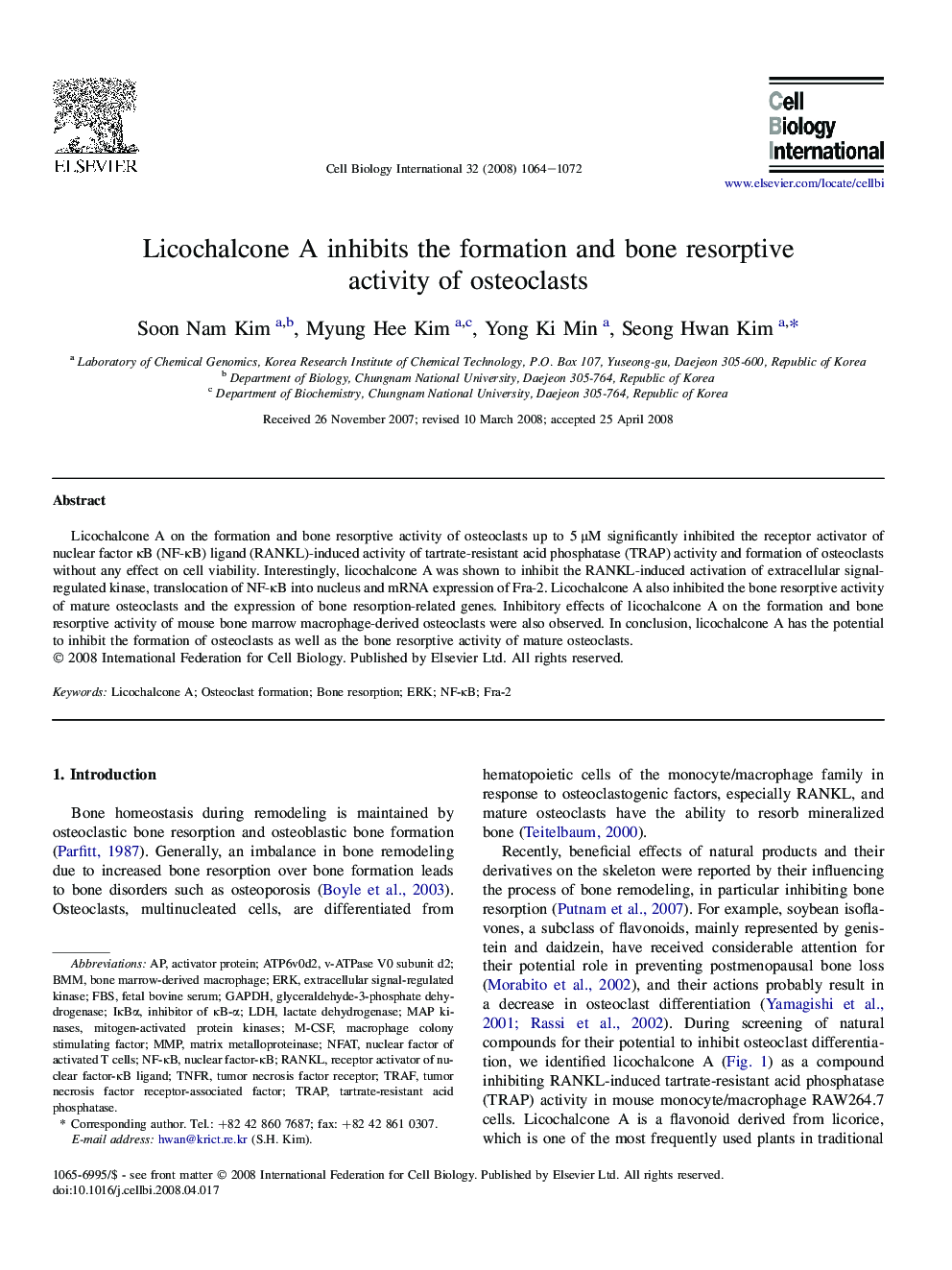| Article ID | Journal | Published Year | Pages | File Type |
|---|---|---|---|---|
| 2067238 | Cell Biology International | 2008 | 9 Pages |
Abstract
Licochalcone A on the formation and bone resorptive activity of osteoclasts up to 5 μM significantly inhibited the receptor activator of nuclear factor κB (NF-κB) ligand (RANKL)-induced activity of tartrate-resistant acid phosphatase (TRAP) activity and formation of osteoclasts without any effect on cell viability. Interestingly, licochalcone A was shown to inhibit the RANKL-induced activation of extracellular signal-regulated kinase, translocation of NF-κB into nucleus and mRNA expression of Fra-2. Licochalcone A also inhibited the bone resorptive activity of mature osteoclasts and the expression of bone resorption-related genes. Inhibitory effects of licochalcone A on the formation and bone resorptive activity of mouse bone marrow macrophage-derived osteoclasts were also observed. In conclusion, licochalcone A has the potential to inhibit the formation of osteoclasts as well as the bone resorptive activity of mature osteoclasts.
Keywords
MMPAtp6v0d2Licochalcone ATRAFTNFRM-CSFIκBαTRAPBMMERKRANKLGAPDHNF-κBFBSNFATFra-2tartrate-resistant acid phosphataseBone resorptionOsteoclast formationfetal bovine serumNuclear Factor of Activated T Cellstumor necrosis factor receptor-associated factormacrophage colony stimulating factornuclear factor-κBlactate dehydrogenaseLDHmatrix metalloproteinasebone marrow-derived macrophageactivator proteinMAP kinasesextracellular signal-regulated kinasemitogen-activated protein kinasesglyceraldehyde-3-phosphate dehydrogenasetumor necrosis factor receptorreceptor activator of nuclear factor-κB ligand
Related Topics
Life Sciences
Biochemistry, Genetics and Molecular Biology
Biophysics
Authors
Soon Nam Kim, Myung Hee Kim, Yong Ki Min, Seong Hwan Kim,
